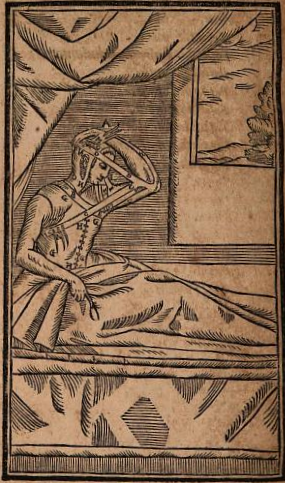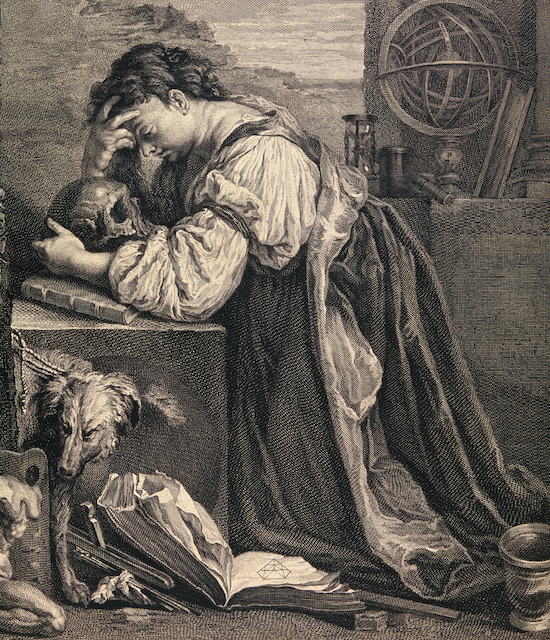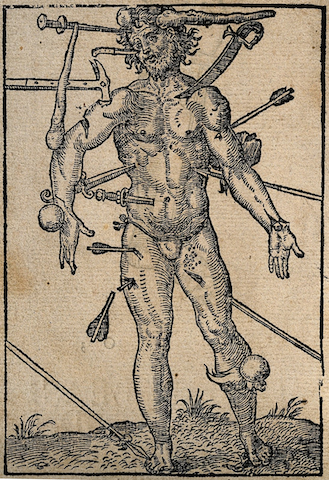How to Replace a Nose, 1587
 Gaspare Tagliacozzi,
Gaspare Tagliacozzi,
De cutorum chirurgia (1598)
An incision is made in the skin of either arm, left or right, down to the flesh, that is, only as far as the surface of the muscles… Furthermore, the extent of the mutilation of the nose will indicate the length and breadth of the skin which must be taken… When the skin is recognized as fit for grafting, its margins, as well as those of the nose, are lightly scarified so that the arm skin may be joined to the nose with sutures by the art. However, in order that in the various motions of the body those parts joined in this way may not be torn apart and injured, the arm should be kept bound to the head with proper bandages, while the wound and suture are being healed with cicatrizing agents… But when excellent union of the wound and nourishment of the skin is observed, sever the arm from the face, and care for the wound as you do for other wounds for a period of several days; but the remaining skin, that is, the result of the grafting, which, of course, is attached to the nose, has to be made into the shape of a nose… Now this procedure, as well as the rest of the operation, does not prove as difficult as practically everyone until now has seemed to believe, even the most illustrious men.
Gaspare Tagliacozzi, Letter to Girolamo Mercuriale (trans. M. T. Gnudi and J. P. Webster)
The wonders of home rhinoplasty: just join Flap I to Appendage L, spend a couple weeks with your arm tied to your face, and voilà! A new you, with a slightly less-mutilated nose.






Rhinoplasty in the 14th century? That is very interesting. It just strengthens the fact that rhinoplasty surgery is not just another plastic surgery procedure. It has roots way back in the 14th century. And it is also used to cure breathing troubles.
Thanks for sharing this...
Why rhinoplasty? See Luigi Monga, "Odeporica e medicina: i viaggiatori del Cinquecento e la rinoplastica," Italica 69 (1992): 378-93. (Adulterers caught in the act had their noses cut off according to Byzantine law, according to the article!)
Wow! This sounds very much like the experience a college classmate of mine whose thumb was badly crushed in a rock climbing accident in the late 70's. The surgeons temporarily grafted her thumb into her thigh to avoid having to amputate. (no comments about short stout teapots, please) Although her thumb was never as good as new, the procedure was successful, in that she retained relatively normal use of her hand. GREAT BLOG!